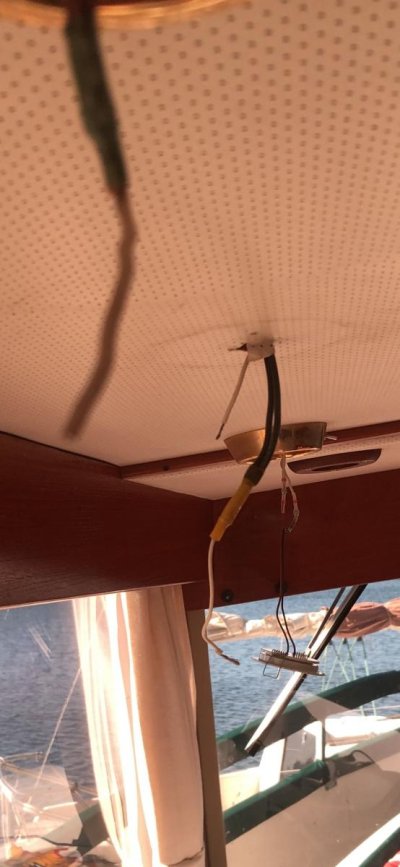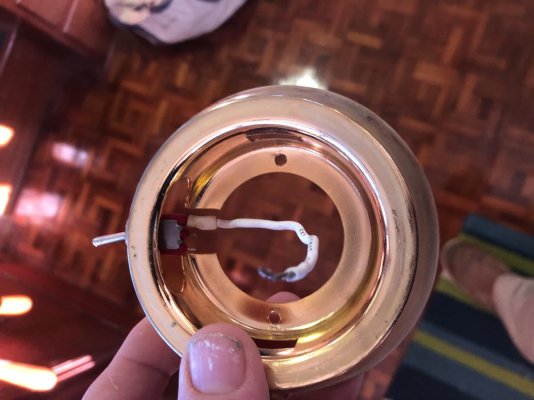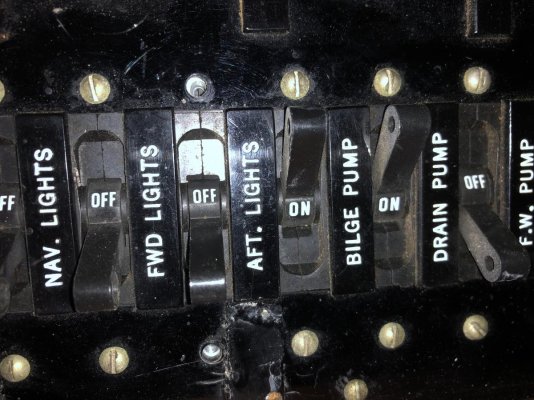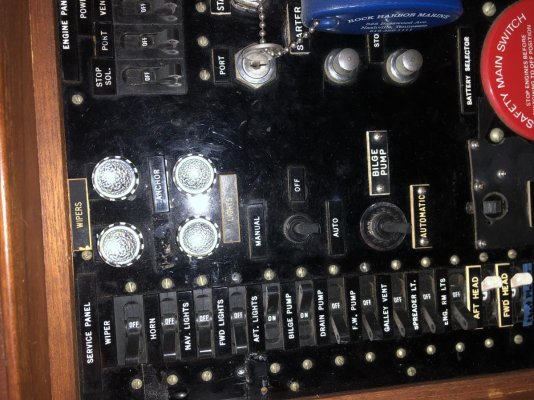Capt. Rodbone
Senior Member
- Joined
- Sep 6, 2020
- Messages
- 172
- Location
- U.S.
- Vessel Name
- SV Stella Polaris MV Sea Turtle
- Vessel Make
- 1978 VanDine Gaff rigged schooner, 1978 Grand Banks Classic Trawler
I have to admit my confidence is a bit shaken when my wife and I are planning to leave in a month on the GreatLoop and I can’t even figure out what should be in my opinion a pretty easy electrical problem. Electrical in general is my biggest weakness. I looked fairly hard for a school I could send myself to and even enrolled in a local junior college program about a year ago but quickly found out they zoomed through the things I wanted to learn and then went straight into building circuits and things. I’m hopeful I can get some guidance here and see this through with my own hands (and wallet). The attached pictures show three lights over our galley sink on our 42 foot trawler. Prior owners had put LED lights into the fixtures however didn’t put the domes back over them and we have no idea where those are. I ordered some LED lights for that particular project and a couple others and last evening was pleased to see those fit exactly into the brass fixtures perfectly. I started with the one on the far right. That went perfectly on the first try and I should know better, but I was all proud of myself. I then go to the middle one. I take the bulb out and noticed the wiring is different with that one. I NOW KNOW The difference was on the successful one the toggle switch wire was intact and ran up through a small hole above the liner. I’m now assuming since it was intact and I just connected positive and negative it worked fine. I Cut and stripped the wires hanging down from the middle one but evidently one is the toggle switch but are those the positive and negative run together through the connector? Would they be connected or maybe one of those is actually the toggle switch? You may need to enlarge the picture that shows all three lights to see what I’m talking about, but I can’t understand why every single one of these at least from the perspective of what wires I have access to are all three different? I attempted to butt connect the two whites when I got a spark and all three went out. I’m hopeful for some coaching on this which I will call problem one.
Problem two which I’m sure many of you experience readers thought about before you even started this paragraph realize either blew a fuse or maybe a breaker tripped? You probably know which however I don’t. I may have to go below which is fine and try to figure out which wire and then find and replace a blown fuse. My first thought however was maybe they’re easily accessible from the panel at my main salon NAV station. It appears that to access the back of it I will need to take 15 screws out? I took two screws out as you will see in another picture from the correct switch thinking maybe it would slide out and expose access to a fuse I could replace but nothing would move so now I’m wondering do I take the entire panel loose or do I go below and try to trace some wiring? Somethings telling me removing 15 screws and sliding that panel completely back is not practical therefore probably not the answer.
Before embarrassing myself in front of all of you learned experienced people I did a search in my manual as well as quite a bit online and the archives here. The only thing I learned is how little I know.
Hopefully I’ve done a reasonable job of explaining this and the pictures will help. I also wouldn’t mind you talking me off this ledge I’m on regarding my current sense of inadequacy?
Problem two which I’m sure many of you experience readers thought about before you even started this paragraph realize either blew a fuse or maybe a breaker tripped? You probably know which however I don’t. I may have to go below which is fine and try to figure out which wire and then find and replace a blown fuse. My first thought however was maybe they’re easily accessible from the panel at my main salon NAV station. It appears that to access the back of it I will need to take 15 screws out? I took two screws out as you will see in another picture from the correct switch thinking maybe it would slide out and expose access to a fuse I could replace but nothing would move so now I’m wondering do I take the entire panel loose or do I go below and try to trace some wiring? Somethings telling me removing 15 screws and sliding that panel completely back is not practical therefore probably not the answer.
Before embarrassing myself in front of all of you learned experienced people I did a search in my manual as well as quite a bit online and the archives here. The only thing I learned is how little I know.
Hopefully I’ve done a reasonable job of explaining this and the pictures will help. I also wouldn’t mind you talking me off this ledge I’m on regarding my current sense of inadequacy?





